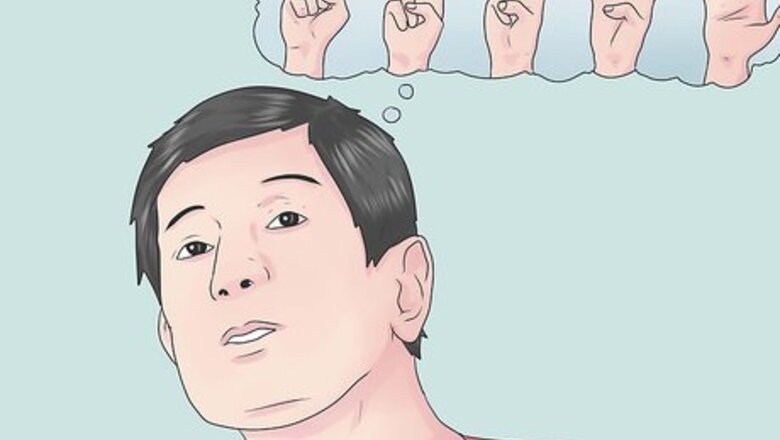
views
Understanding the Basics
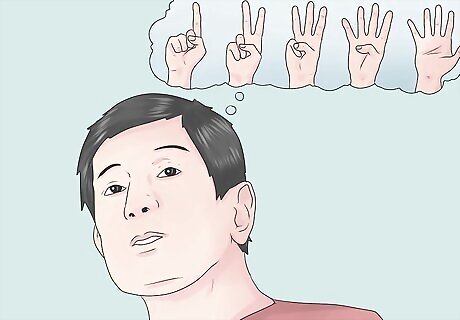
Learn to count "one-and-two, three-and-four, five-six." Repeat until you know the eight-beat rhythm well. Here's what you need to know: There are eight shag dance steps, each of which corresponds to a beat. The "one-and-two" and "three-and-four" steps should take about as much time to complete as the "five-six." Get some good shag dance music going, while you're at it. Here are some favorites: "The Flame" by Fine Young Cannibals "Do You Believe" by Cher "Never Make a Move Too Soon" by B.B. King "Your Heart's in Good Hands" by Al Green "Mojo Boogie" by Henry Gray
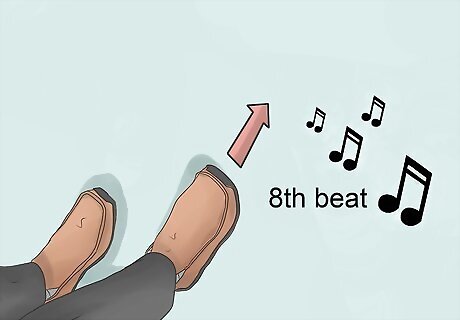
Learn to step in time to the eight-beat rhythm. Know that the idea of counting is to give your feet a beat to move to. Your feet will move with every count, which includes any number you say as well as the word "and." Before you try incorporating the shag dance moves, just step in place. Alternate between your left and right foot. Repeat until you're comfortable counting the rhythm and alternating feet. In the shag dance, you'll never step with the same foot twice in a row. This is a fluid, not a jerky dance move. Think of your forward and backward movement as the movement of a swinging pendulum. Avoid having any bounce in your steps and smoothly transition from one step to the other.
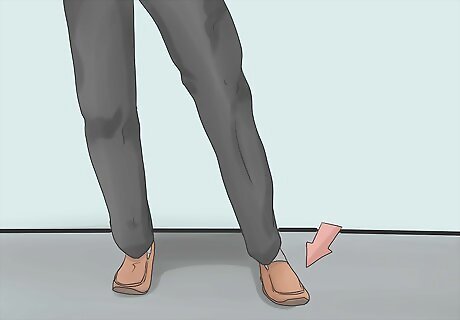
Know that men and women should do the same step with the opposite foot. This is an important thing to know before you begin to shag dance. Think of it as the partners creating a mirror image of each other's steps. If you're at a loss for what to do and have a knowledgeable partner who is facing you, just mirror his or her footsteps. Women should always do the same step as the men but with the opposite foot. Women, therefore, should lead with the right foot. As you start to move your feet, remember that your lower body should do most of the work for this particular dance. Keep your upper body upright and tall and avoid swaying. Both men and women should wear leather-bottomed shoes, with the women wearing flats, to prevent them from shuffling across the floor.
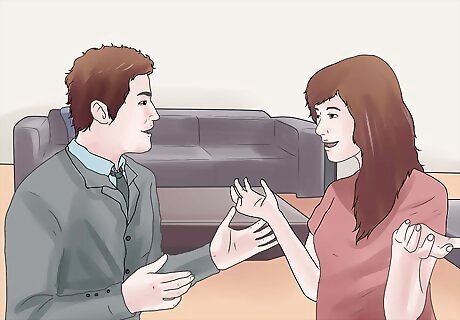
Understand the starting position. The man and woman should stand facing each other. Men and women should keep their feet lose and relaxed, standing so that they are facing each other, with their feet opposite each other with about an arm's length of space in between them. The man should hold the woman's right hand with his left hand. He should hold her hand fairly firmly, without gripping her too tightly, to lead the woman. The forearm of the hands that are holding each other should be level with the floor, and should not sway from side to side or move up or down, either. The pair should keep the non-holding arm in a relaxed, but slightly forward hanging position.
Mastering the Steps
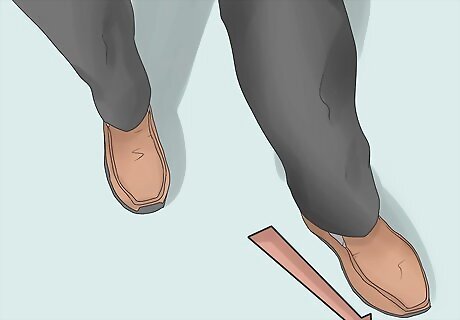
The man should step forward with his left foot. The step should be no longer than the length of his foot. As he does this, the woman should step forward with her right foot. This step occurs on the "one" beat.
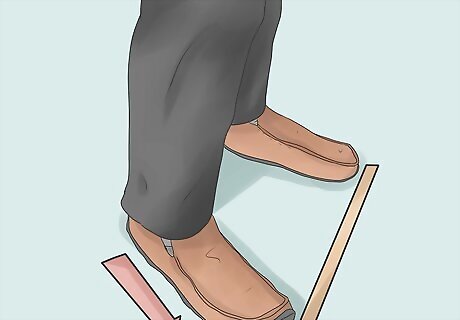
The man should step forward with his right foot. As he does this, the woman should step forward with her left foot. Think of it as stepping up to a line, having your feet meet in the same place, so that they are evenly positioned on the ground. This step occurs on the "and" beat. From your original starting position, it is as if you simply stepped up one "space."
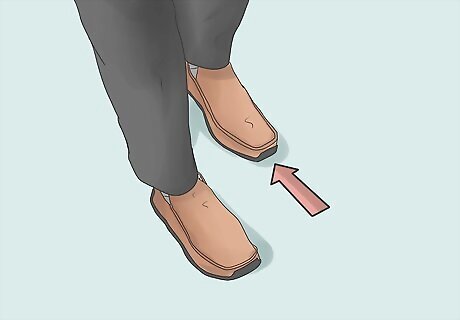
The man should step his left foot back one step. This foot should now be in its original starting position. As the man steps back his left foot, the woman should step back her right foot to its starting position. This step occurs on the "two" beat.
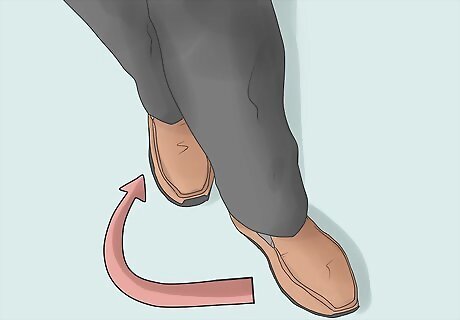
The man should step his right foot back one foot length behind his left foot. Think of it as moving the right foot the length of two feet, so that it is positioned one "foot" behind the left foot. The woman should step her left foot back one foot length behind her right foot. The step occurs on the "three" beat.
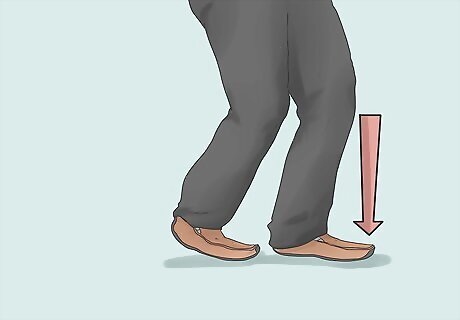
The man should shift his weight onto his left foot. He can also take a small step in place, but he should make sure not to move his foot forwards or backwards. The woman should shift her weight onto her right foot, making sure not to move forward or backwards, either. This steps occurs on the second "and" beat.

The man should shift his weight onto his right foot. The man should do the same thing he did with his left foot, taking care not to move forward or backwards as he shifts the weight. As he does this, the woman should shift her weight on her left foot. This steps occurs on the "four" beat.
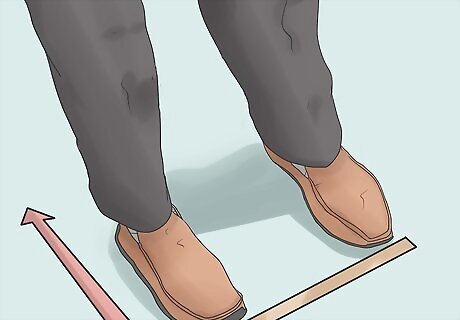
The man should step back his left foot to meet the right. His left foot and right should now be parallel, as if he had stepped up to meet a line, stepping one full "space" back from his original starting position. As he does this, the woman should step her right foot back to meet her left foot. This step occurs on the "five" beat.
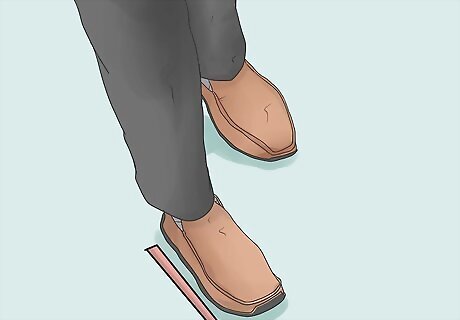
The man should step forward with his right foot. The foot will now be one foot's length in front of the left foot. As he does this, the woman should step forward with her left foot. This steps occurs on the "six" beat.
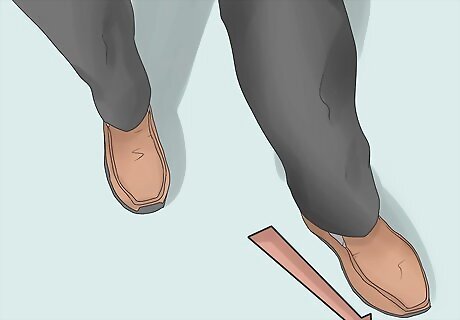
The man should step his left foot forward, repeating the first step. As he does this, the woman should step her right foot forward, repeating her first step. This occurs during the new "one" beat.
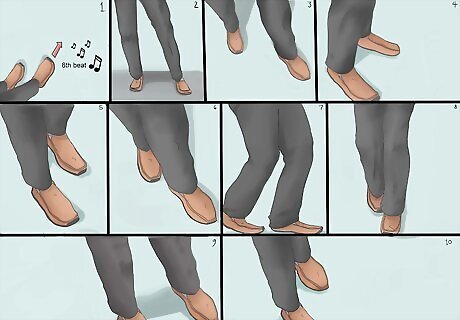
Repeat all the steps. Keep counting and moving your feet in the same way to the beat. As you get more experienced, you can get a bit more creative with your body movements by moving in a circle as you face your partner, having the man spin the female partner, taking more exaggerated steps, or by putting some more arm movements into the mix. The female partner can also spin on her own to add some flair to the dance. Though the traditional hand position is for the pair to hold opposite hands with the other hands free, the man can place his hand on the small of the woman's back during the dance, or just during part of the dance, too. One partner can even dance behind the other, still holding hands while facing that partner's back.
















Comments
0 comment